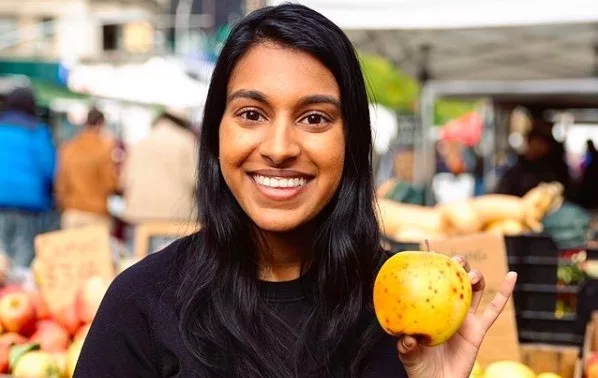And now that you don’t have to be perfect.
John Steinbeck
You can be good.
I lived in Texas in my early 20’s. One summer – the summer of 1995 I think – we were having a drought. Okay, I think Texas has a drought every summer, but this is the one I remember. It was awful. We were being asked to shower less (which is not great when it’s 104 degrees outside), wash dishes less, and water the yard less. Basically there was a massive cry to just use less water.That same summer, there was a storm in Virginia that caused flash flooding and ended with 3 fatalities. Already looking for solutions to life’s problems and never being one to understand science, I asked a friend how we could live in a world where rain was so bad in one part of the country that people were dying and so scarce in another part that people were dying. Couldn’t we figure out a way to get the water from one part of our country to another?
I don’t remember the science-y answer that told me we could not, but that conversation became one in a long line of many where I started to see easy solutions and couldn’t understand why no one else saw them.
Fast forward to 2014. We were on spring break in Homestead Florida and visited the Miami Brewing Company. All of the beers had some sort of tropical fruit flavor. When we inquired about it (it seemed a little on the nose for a craft brewery), the bartender told us that they used fruit that would otherwise be discarded due to the way it looked, which had started with the winery (on the same property and owned by the same folks).
Similar to the feeling I had all those years ago, the founders had realized that food was going to waste and they could use it to create something new. This is wonderful, but it is only solving one part of the problem: keeping food from going to waste.Over 150,000 tons of food goes to waste in America every day. And yet, one-sixth of America does not have enough food to eat.One side of my original question was about the excess water in one place, but the other side was about the people who needed water in another place. The answer seemed, to me, like it should be simple logistics. Take the excess from one place and move it to another. When my brother worked for Panera in 2008, we learned that they take the food they have left in the bakery at night and donate it to a local homeless shelter. There are many other organizations doing this, including Postmates who recently started letting restaurants sign up to have a postmate driver take their excess food to a shelter or non-profit at the end of the night.
All of this is great. But it still misses a big part of the picture in our society: over half of the Americans who do not have enough food to eat are employed. This means it is unlikely they are homeless and would be benefited by these programs. There are many other things that factor into our complicated food ecosystem. For example, there are people who have a hard time getting to the store. Yes, they can use Instacart or a similar service, but we all know how much more that costs since the prices are higher. Remember our winery/brewery at the beginning of this story? They got their fruit because grocery stores didn’t want to sell it because it didn’t look right. If the grocery stores and restaurants won’t buy it, how are the farmers getting paid for it? They aren’t. They are discarding it and taking the loss.
But who is going to pay for produce that can’t be used?
That’s the thing. It can be used. Not only is fruit that doesn’t fit the standard size edible, it is sometimes better! Did you know that the sweetest melons develop scarring on their rinds called “sugar lines”?
Neither did I until I met Anya Ranganathan. Anya founded Bad Apple Produce to buy food from farmers (that the stores wouldn’t buy) and sell it to people who can’t afford the fresh food in their local store or can’t get to the store for fresh food. She got the idea in college when she worked as an intern for a local government office in North Carolina. She was tasked with assessing data on how to improve quality of life in Durham, North Carolina. One of the things that she saw was that people wanted to eat more fresh fruit and veggies, but the offerings in their local store were expensive – and often spoiled quickly.
Which is another problem. By the time your food gets to the grocery store, it has probably been in transit a while. And every day away from the day it was picked is a day closer to spoiling. Some estimates say that the apples in your grocery store (any time other than the fall) have been there since the fall – which could be up to ten months. This is one of the reasons for the upswing in Farmer’s Markets. The sustainable food revolution started teaching people this (and other facts), and people wanted a way to buy healthy food that was also fresh. But, again, Farmer’s Markets are expensive and many people can’t afford to shop at them.
Her background being in economics, she saw this as a supply/demand mismatch problem and started digging in to figure out where the demand started exceeding the supply. What she found was that a lot of high quality produce is discarded due to surplus and minor cosmetic imperfections. Surplus! People were looking for something that existed and it was being discarded. Anya helped me understand how the food is actually edible that grocery stores don’t want. In fact, she says the standards that grocery stores use aren’t even logical! For example, gala apples that have less than 50% red coloring in their peels are considered less desirable. Same goes for a sweet potato that grew too large and yes, those melons with the sugar lines.
In response to what she discovered, she and one of her classmates started a company that sourced off-grade produce from local farmers and delivered them to subscribers’ doorsteps. When Anya moved to New York after college, she learned a couple of things really quickly: (1) food was even more expensive there and (2) lugging a bag of apples and potatoes up the steps to your 5th floor apartment was super annoying. She knew that the model she started in North Carolina could solve these problems as well. So she partnered with Stefanie, a fourth generation produce industry veteran, and Bad Apple Produce was born. They are a 100% womxn-owned company and they are passionate about paying a living wage.
They save produce that would otherwise be discarded based on size, color, shape, peel variations, and even because it is excess supply. Not only does her work solve the two problems of excess food and not enough food, it is also part of the larger movement towards a more conscious economy by highlighting the importance of local and regional farmers and teaching consumers that it’s okay to eat food that doesn’t look quite like what they are used to.
In the wake of COVID-19, there was an immediate need for food banks to have more food. Some estimates say the demand increased 40% with the first round of layoffs. Additionally, many people were now not leaving the house. Bad Apple produce stepped up to once again, solve both problems! They overhauled their customer service practices to help accommodate older customers who weren’t used to ordering online including adding a phone number for customer service and quickly implementing no-contact delivery. They also partnered with local food banks and are donating their own excess inventory! And now when you order from them, you can add a donation to Food Bank for New York City at checkout.
On a larger scale, she is pushing for people to realize the importance of strengthening disaggregated, local food systems instead of relying on multinational corporations to produce and distribute food. In addition to the freshness factor, there are less ripple effects when there is a problem. Bad Apple Produce took only to re-outfit their supply chain to accommodate 5x the number of customers they were previously serving.
And for the most part, they’ve maintained the same level of service throughout. We all know this has not been the case with larger suppliers. In fact, everyone knows it; that’s why the grocery stores went bare within days – no one knew when there would be more food coming.
Anya is a true leader and what I’ve referred to as a multi-solver. She is consciously building a brand that equalizes supply and demand in the produce markets, helps people eat more fruits and vegetables, and gets more cash into the hands of farmers. And she’s doing it in one of the world’s most expensive places to live! Afterall, why tame just one environment when you can tame them all?
Visit Bad Apple Produce today to learn more. If you are in NYC, sign up!







